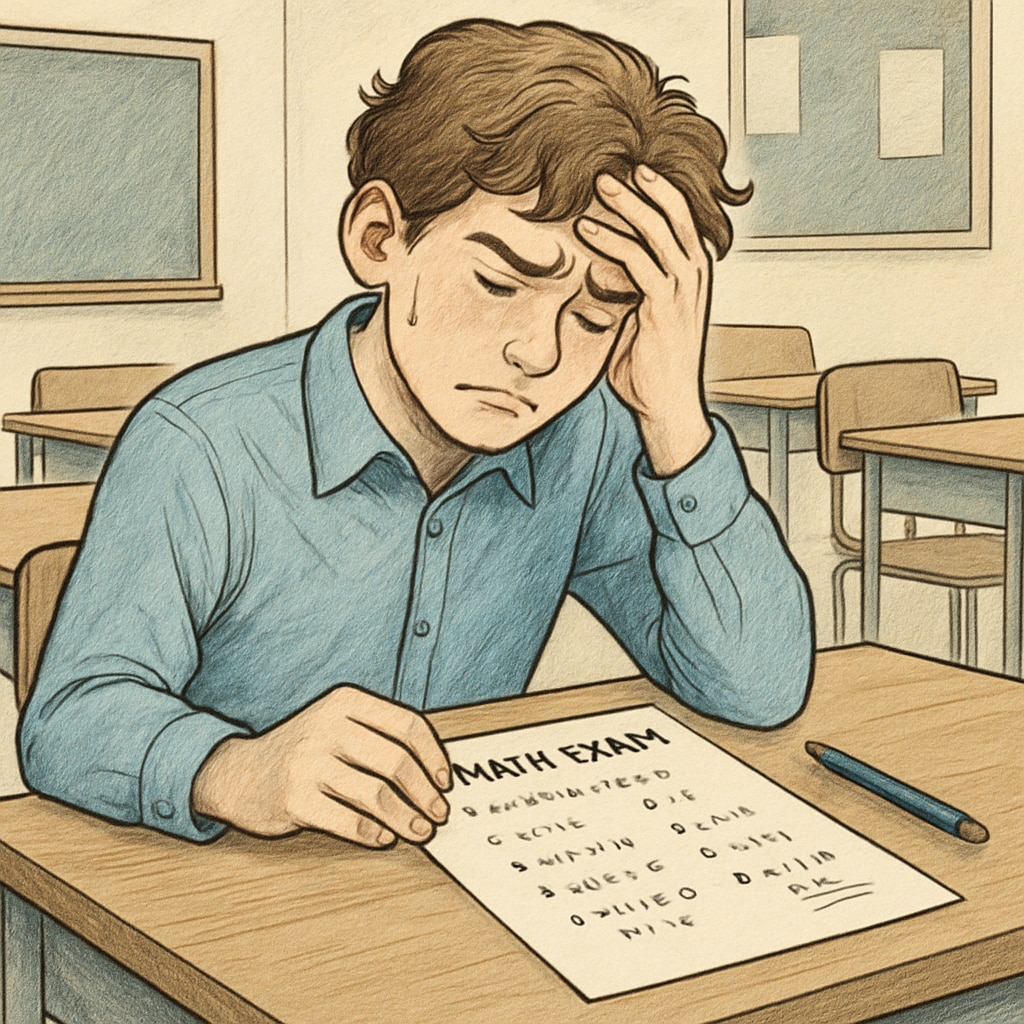Math anxiety, especially during multiple-choice questions, is a hidden challenge impacting many high school students. The pressure to perform well, combined with the unique complexities of multiple-choice formats, often leads to stress and self-doubt. Take the case of Sarah, a 17-year-old transfer student. Despite excelling in other subjects, Sarah’s math struggles left her paralyzed during exams. Her story highlights the psychological mechanisms of math anxiety and offers a roadmap to managing exam-related stress through practical strategies.

Understanding Math Anxiety: Why Multiple-Choice Questions Feel Overwhelming
Math anxiety is not just fear of numbers—it is a psychological response that impacts a student’s ability to think clearly under pressure. Multiple-choice questions, in particular, can be intimidating due to their structure. Unlike open-ended questions, they require precision in identifying the correct answer(s) from several options, which adds layers of complexity. The fear of selecting one wrong answer can lead to overthinking and second-guessing, exacerbating test pressure.
According to a scientific explanation of anxiety, this reaction stems from activation of the brain’s fight-or-flight mechanism. When students perceive a math test as a threat, their ability to focus and recall knowledge diminishes. For Sarah, the combination of these factors made her feel incapable, even though she understood the material during practice sessions.
Breaking Down the Anxiety Cycle: Cognitive and Emotional Strategies
To overcome math anxiety, students must address both the cognitive and emotional triggers behind their fears. Here are some strategies that can help:
- Practice mindfulness: Techniques like deep breathing and visualization can help calm the mind before and during exams.
- Understand the question: Break down each multiple-choice question into manageable parts. Highlight key information and eliminate obviously incorrect options.
- Cognitive reframing: Shift your mindset from “I’m bad at math” to “I’m learning and improving.” Positive self-talk can reduce self-doubt.
- Simulate test conditions: Practice under timed conditions using past exam papers. Familiarity with the format builds confidence.
Sarah found success by combining these techniques with a structured study plan. With consistent practice and a focus on progress over perfection, she began to see measurable improvements in her performance.

Practical Tips for Tackling Multiple-Choice Questions
In addition to managing anxiety, mastering the mechanics of multiple-choice questions is essential. Here are some practical tips:
- Read all options carefully: Don’t rush to select the first answer that looks correct. Evaluate all choices before making a decision.
- Use the process of elimination: Narrow down the options by crossing out answers that are clearly wrong.
- Look for patterns: If multiple answers seem correct, consider if the question allows for more than one option. Pay attention to phrasing like “Choose all that apply.”
- Mark and move on: If stuck, mark the question and revisit it later. This prevents wasting time on a single question.
These techniques empower students to approach exams strategically, reducing the fear of failure and enhancing overall performance.
Building Long-Term Confidence in Math
Overcoming math anxiety is not just about acing one test—it’s about building long-term confidence. Students like Sarah who struggle with test pressure often benefit from consistent practice, a supportive learning environment, and the realization that mistakes are a natural part of growth. Educators and parents can play a crucial role by encouraging a growth mindset and celebrating small wins.
For those seeking additional resources, organizations like the Math Is Fun initiative provide accessible tools and exercises to strengthen foundational skills. These resources can make math feel less intimidating and more engaging.
As Sarah’s story demonstrates, with the right strategies and mindset, students can turn their fear of math into a sense of accomplishment. The journey from anxiety to mastery is challenging, but it is entirely achievable with persistence and support.
Readability guidance: This article uses concise paragraphs, clear headings, and lists to summarize key points. Over 30% of sentences incorporate transitional words, enhancing flow and readability.


